Hirshhorn Sculpture Garden
Washington DC Building Photos Thumbnails Buildings Home
|
Stainless Steel sculpure "Kiepenkerl" by Jeff Koons, part of Hirshhorn Sculpture Gallery Nov 2008, Photo 81 |

|
|
Bronze sculpure "Nymph" by Aristide Maillol, part of Hirshhorn Sculpture Gallery Nov 2008, Photo 83 |

|
|
Bronze sculpure "The Burghers of Calais" by Auguste Rodin, part of Hirshhorn Sculpture Gallery The town of Calais had contemplated a historical monument for decades when Rodin learned of the project. It would commemorate the six townspeople of Calais who offered their lives to save their fellow citizens. During the Hundred Years' War, the army of King Edward III besieged Calais, and Edward ordered that the town's population be killed en masse. He agreed to spare them if six of the principal citizens would come to him prepared to die, bareheaded and barefooted and with ropes around their necks. When they came, he ordered that they be executed, but pardoned them when his queen, Philippa of Hainault, begged him to spare their lives. The Burghers of Calais depicts the men as they are leaving for the king's camp, carrying keys to the town's gates and citadel. Rodin began the project in 1884, inspired by the chronicles of the siege by Jean Froissart. Hw conceived the sculpture as a study in the varied and complex emotions under which all six men were laboring. In 1889, The Burghers of Calais was first displayed to general acclaim. It is a bronze sculpture weighing two tons, and its figures are 2 metres tall. The six men portrayed do not display a united, heroic front; rather, each is isolated from his brothers, individually deliberating and struggling with his expected fate. At ground level, the figures' positions lead the viewer around the work, and subtly suggest their common movement forward. Nov 2008, Photo 87 |
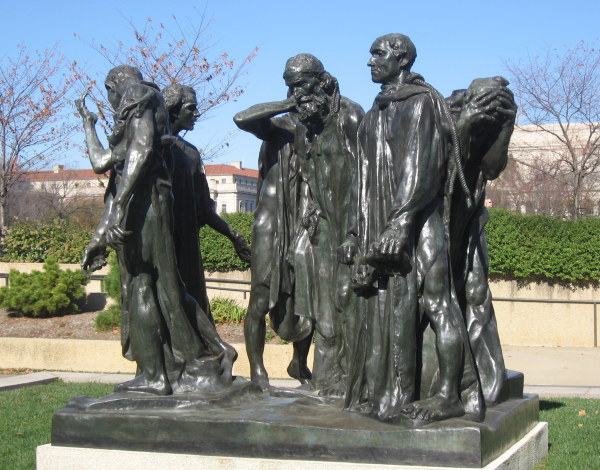
Many more photos of Rodin's sculptures, at this museum and
others,
|
|
Lunar Bird by Joan Miró Bronze, 1945, enlarged 1966, cast 1967 Nov 2008, Photo 98 |

|
|
Bronze sculpure "Eros, Inside Eros" by Arman, part of Hirshhorn Sculpture Gallery Nov 2008, Photo 101 |

|
Henry MooreHis forms are usually abstractions of the human figure, typically depicting mother-and-child or reclining figures. Moore's works are usually suggestive of the female body, apart from a phase in the 1950s when he sculpted family groups. His forms are generally pierced or contain hollow spaces. Many interpreters liken the undulating form of his reclining figures to the landscape and hills of his birthplace, Yorkshire. |
|
King and Queen, Henry Moore Bronze, 1952-53 Nov 2016, Photo 378 |
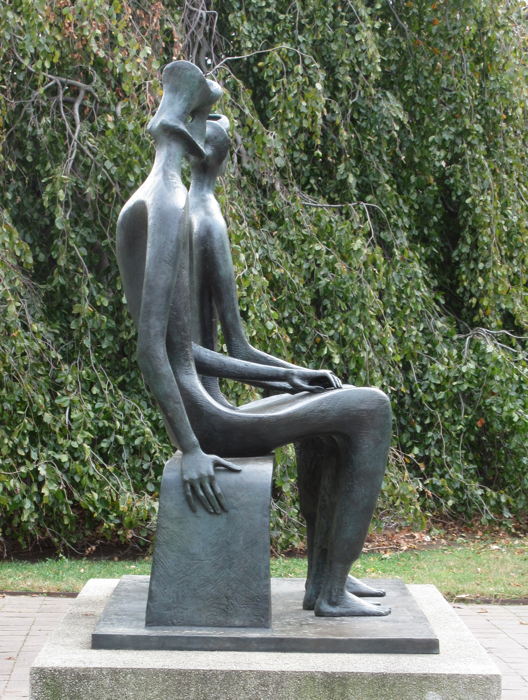
|
|
King and Queen, Henry Moore Bronze, 1952-53 Nov 2016, Photo 379 |
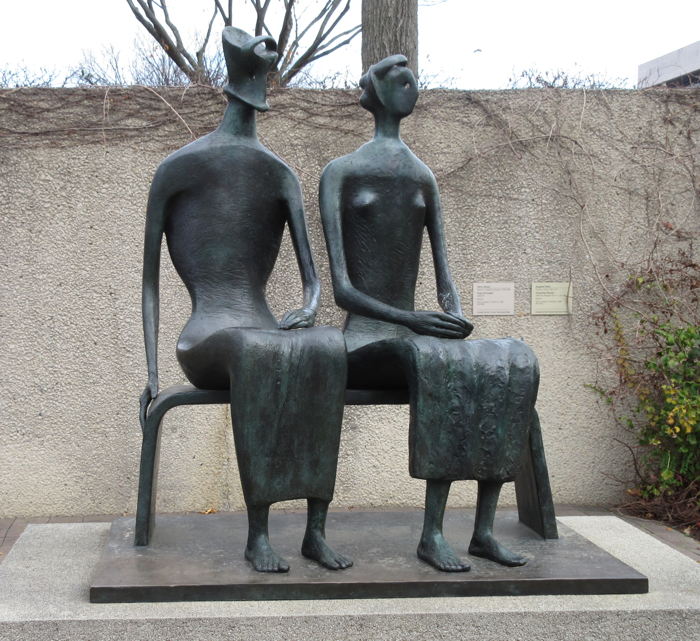
|
|
Working Model for "Three-Way Piece No. 3: Vertebrai", Henry Moore Bronze, 1968, cast 1969 Nov 2016, Photo 402 |
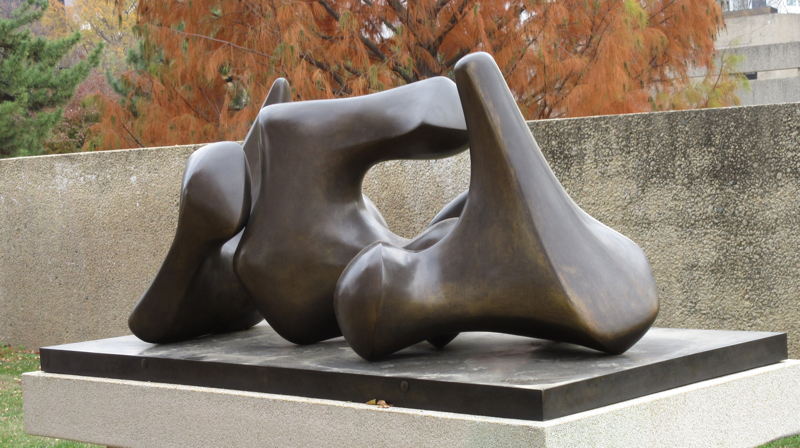
|
|
Three-Piece Reclining Figure No. 2: Bridge Prop, Henry Moore Bronze, 1963, cast 1964 Nov 2016, Photo 418 |
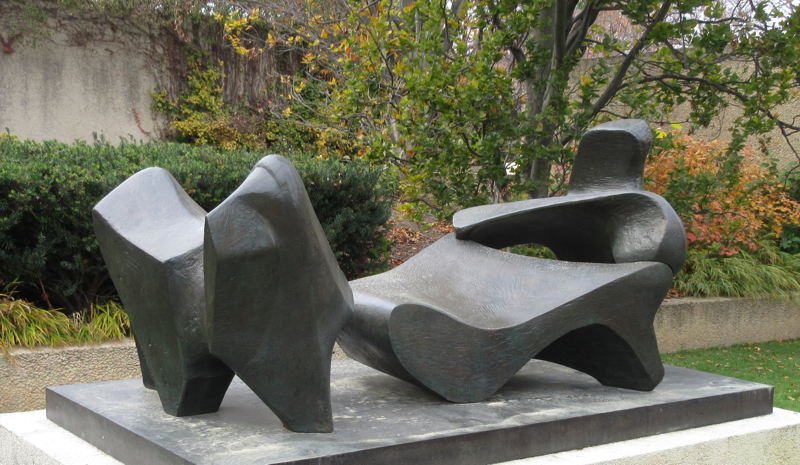
|
|
Three-Piece Reclining Figure No. 2: Bridge Prop, Henry Moore Bronze, 1963, cast 1964 Nov 2016, Photo 419 |

|
|
Draped Reclining Figure, Henry Moore Bronze, 1952-53, cast 1956 Nov 2016, Photo 421 |
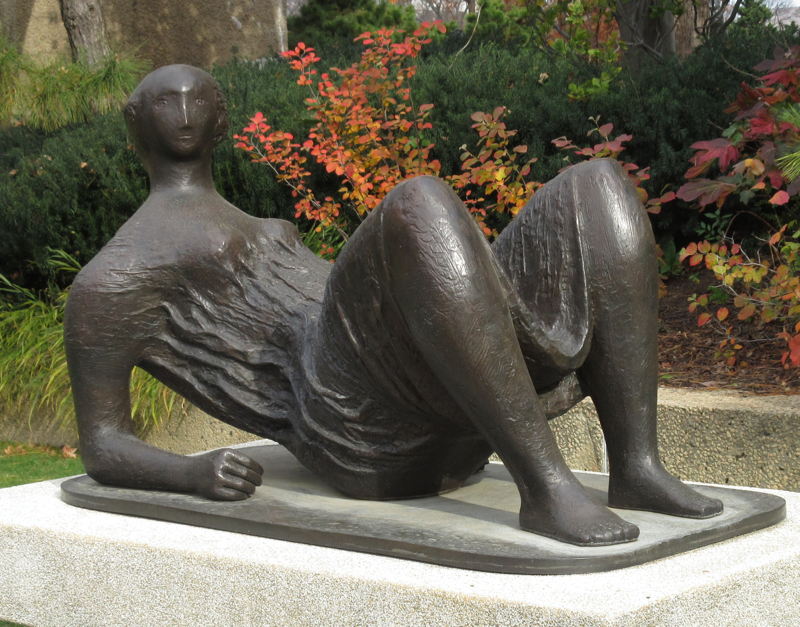
|
|
Seated Woman, Henry Moore Bronze, 1956-57, cast 1962 Nov 2016, Photo 423 |
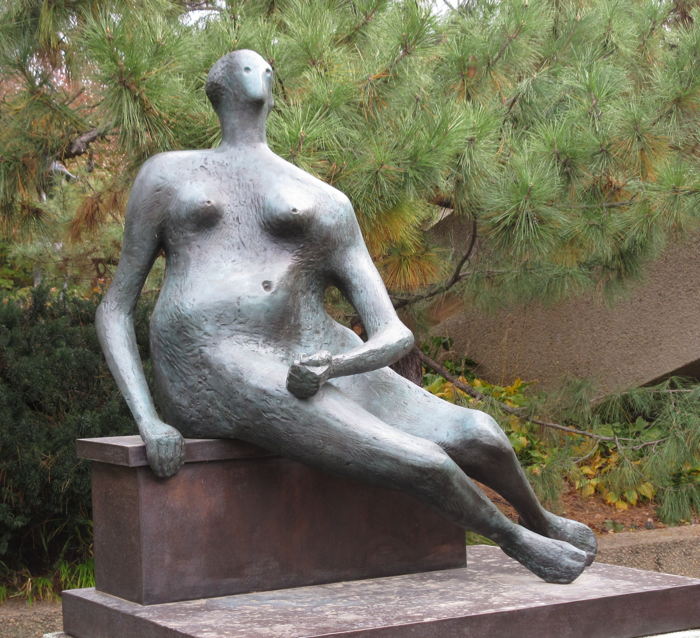
|
|
The Great Warrior of Montauban by Emile-Antoine Bourdelle Bronze, 1898-1900, cast 1956 Nov 2016, Photo 372 |
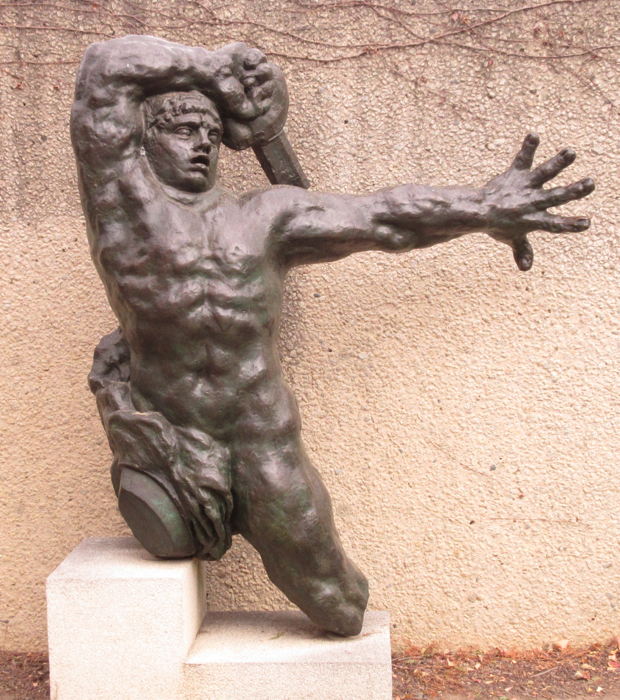
|
|
The Great Warrior of Montauban by Emile-Antoine Bourdelle Bronze, 1898-1900, cast 1956 Nov 2016, Photo 374 |
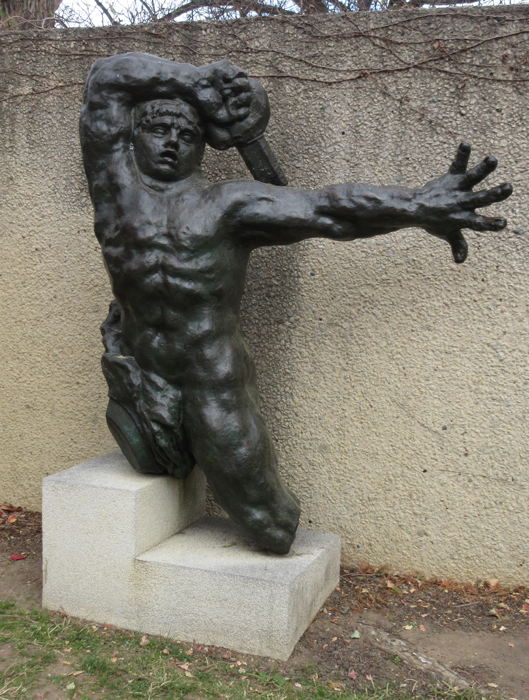
|
|
Self-Portrait with Model at Bergamo by Giacomo Manzú Bronze, 1942 Nov 2016, Photo 376 |
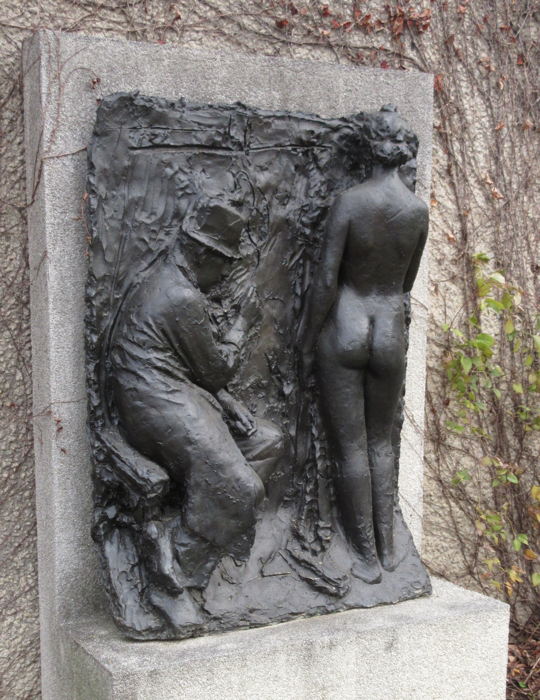
|
|
Self-Portrait with Model at Bergamo by Giacomo Manzú Bronze, 1942 Nov 2016, Photo 377 |
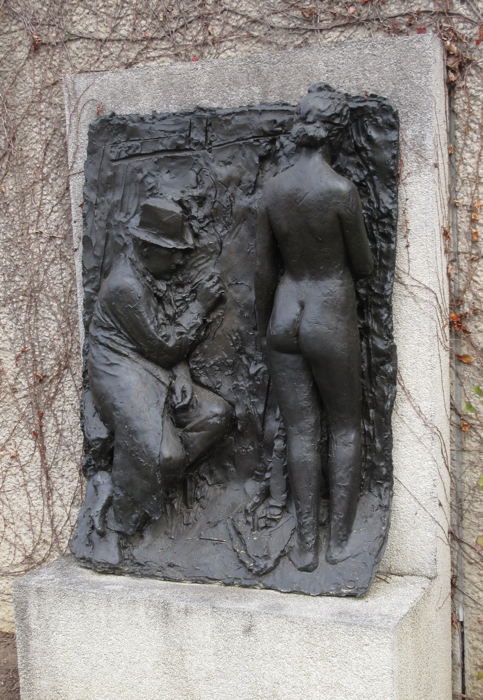
|
|
Young Girl on a Chair by Giacomo Manzú Bronze, 1955 Nov 2016, Photo 397 |
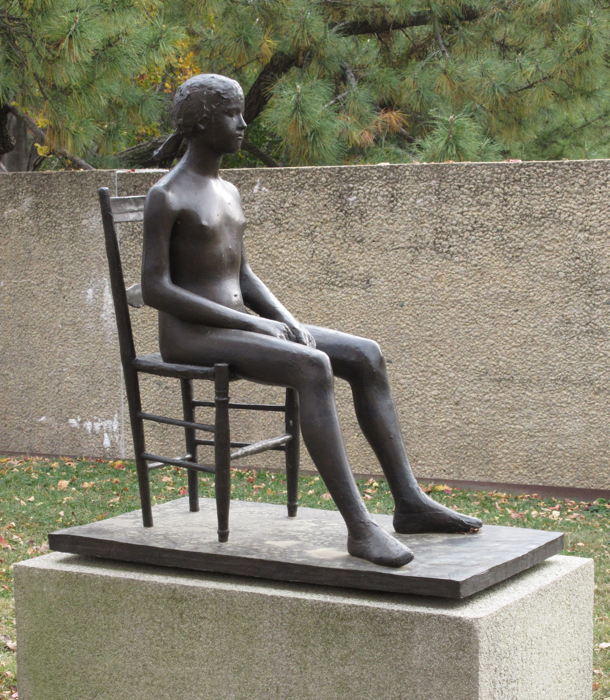
|
|
Young Girl on a Chair by Giacomo Manzú Bronze, 1955 Nov 2016, Photo 398 |
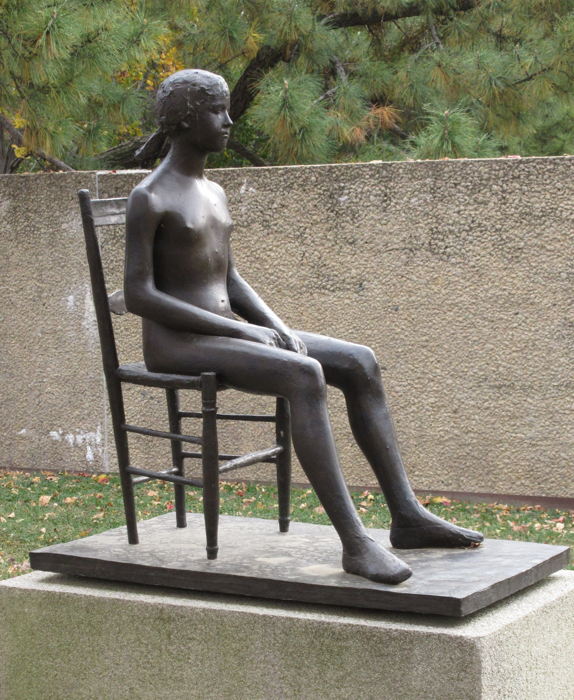
|
|
Seated Yucatán Woman by Francisco Zúñiga Bronze, 1973 Nov 2016, Photo 388 |

|
|
Seated Yucatán Woman by Francisco Zúñiga Bronze, 1973 Nov 2016, Photo 389 |
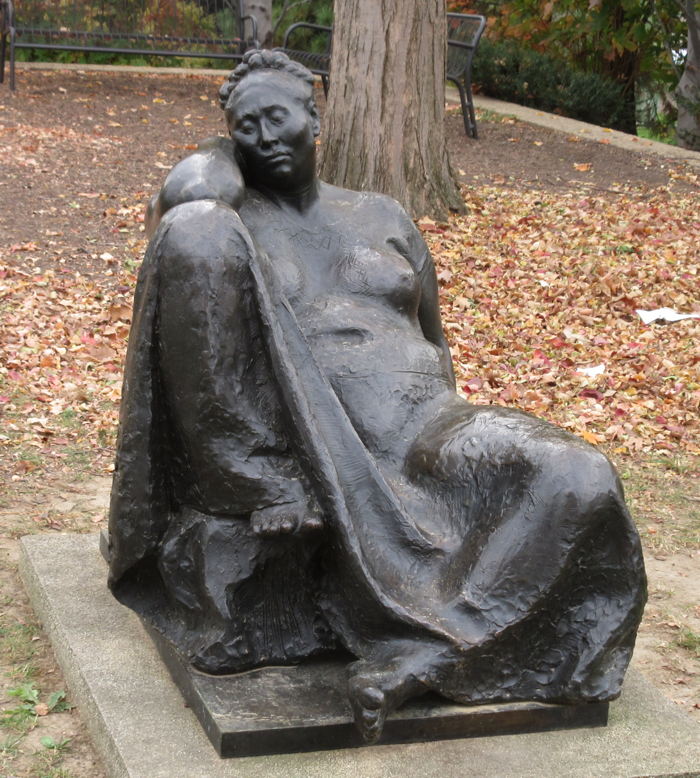
|
|
Clamdigger by Willem de Kooning Bronze, 1972, cast 1976 Nov 2016, Photo 394 |
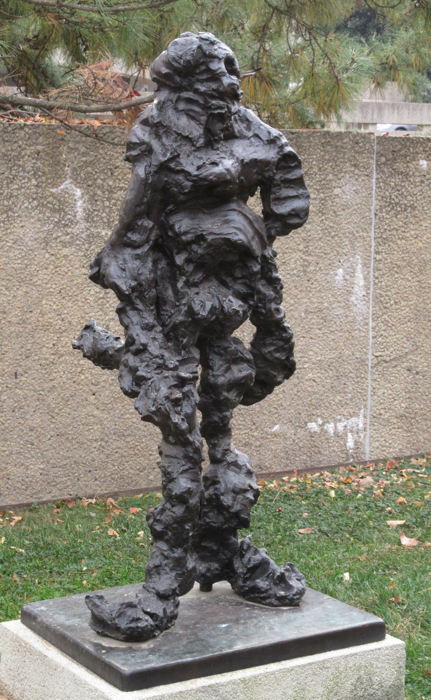
|
|
Clamdigger by Willem de Kooning Bronze, 1972, cast 1976 Nov 2016, Photo 395 |
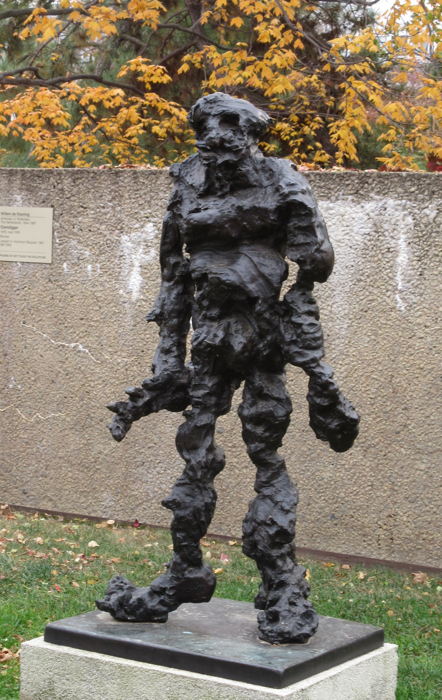
|
|
Horse and Rider by Marino Marini Bronze, 1952-53 Nov 2016, Photo 400 |
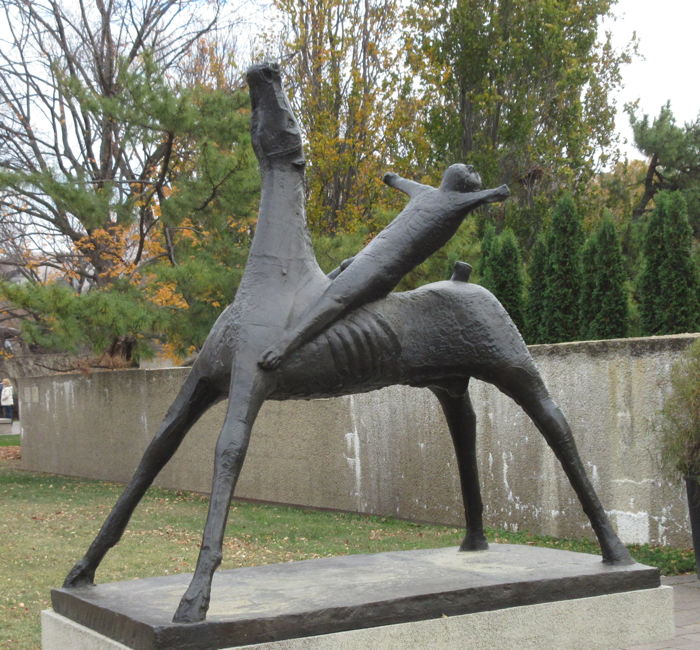
|
|
Lunar Bird by Joan Miró Bronze, 1945, enlarged 1966, cast 1967 Nov 2016, Photo 403 |
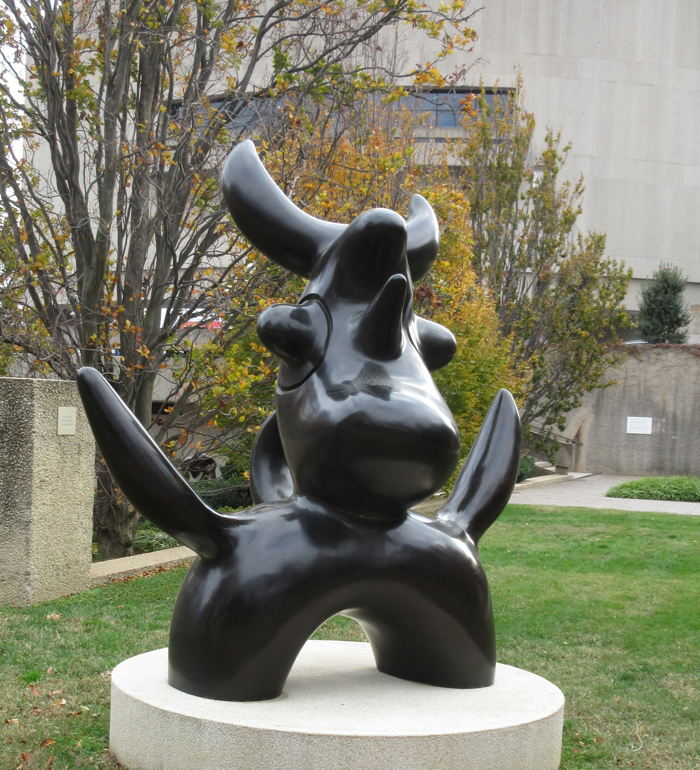
|
|
Lunar Bird by Joan Miró Bronze, 1945, enlarged 1966, cast 1967 Nov 2016, Photo 404 |
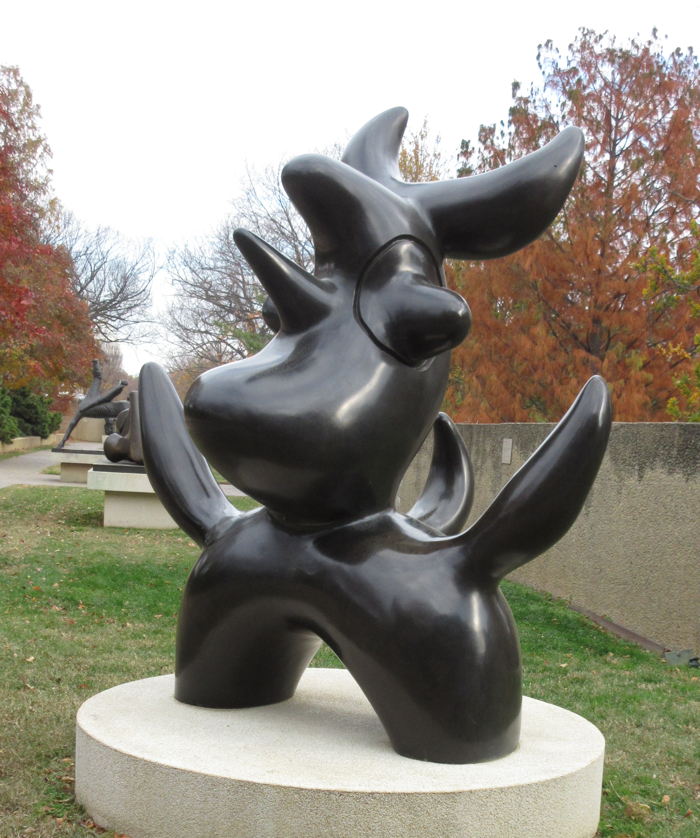
|
|
Eros, Inside Eros by Arman Bronze, 1986 Nov 2016, Photo 407 |
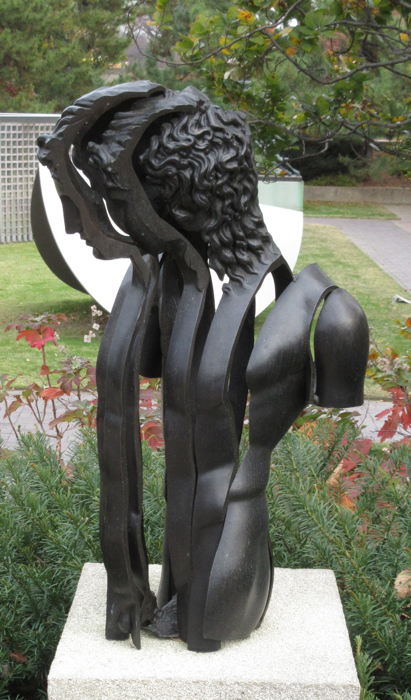
|
|
Sphere No. 6 by Arnaldo Pomodoro The inner ball represents the Earth and outer ball represents Christianity. Versions of the sculpture can be seen in the Vatican Museums in Rome, Trinity College Dublin, the United Nations Headquarters in New York, the Hirshhorn Museum and Sculpture Garden in Washington D.C., Christian Theological Seminary in Indianapolis, the de Young Museum in San Francisco, Tehran Museum of Contemporary Art in Tehran, and the University of California, Berkeley." Bronze, 1963-65 Nov 2016, Photo 409 |
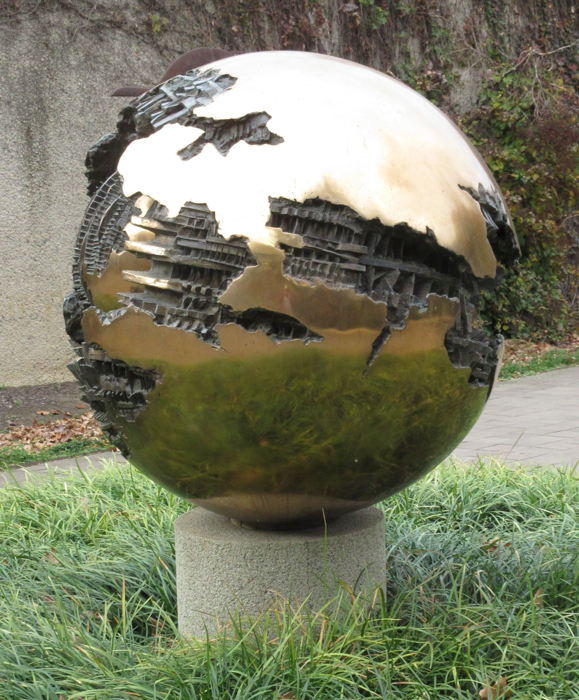
|
|
Post-Balzac by Judith Shea Bronze, 1991 Nov 2016, Photo 411 |
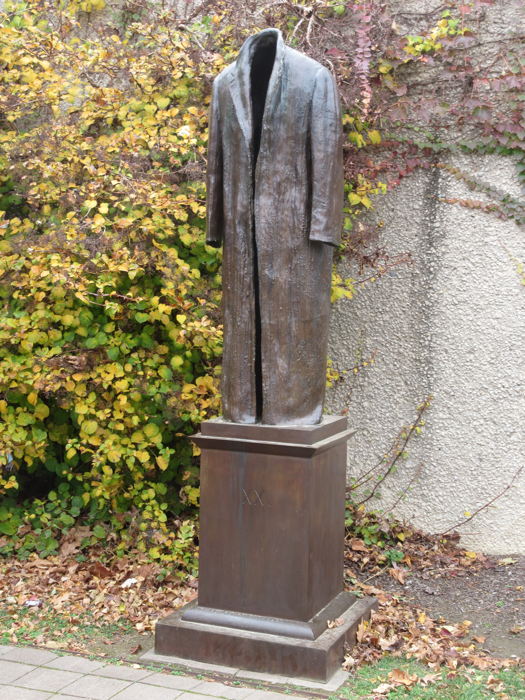
|
|
Voltri XV by David Smith Steel, 1962 Nov 2016, Photo 413 |
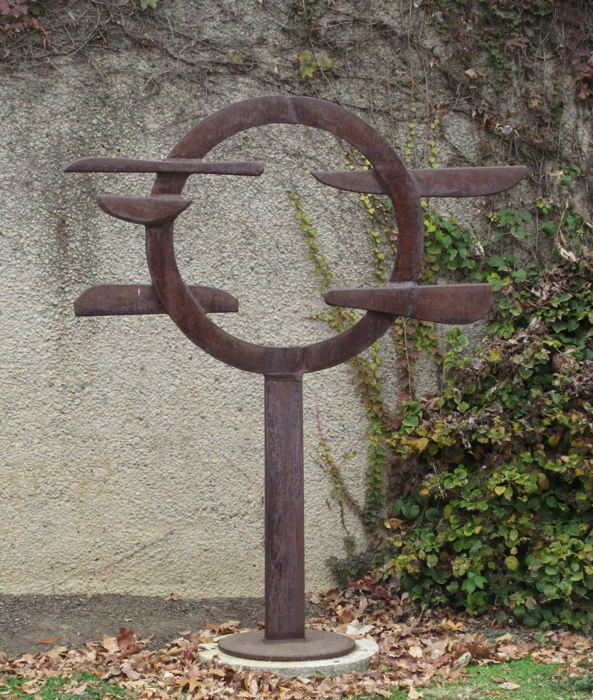
|
|
Evocation of a Form: Human, Lunar, Spectral by Jean Arp Bronze, 1950, enlarged and cast 1957 Nov 2016, Photo 415 |
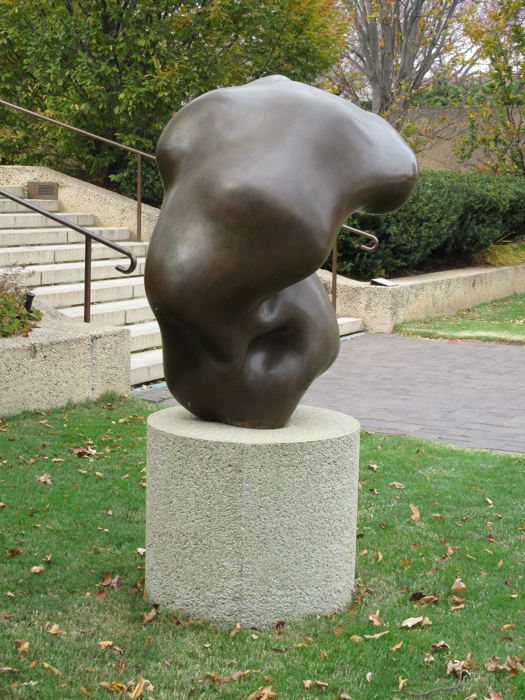
|
|
Evocation of a Form: Human, Lunar, Spectral by Jean Arp Bronze, 1950, enlarged and cast 1957 Nov 2016, Photo 416 |

|
|
Kiepenkeri by Jeff Koons Stainless Steel, 1987 Nov 2016, Photo 425 |
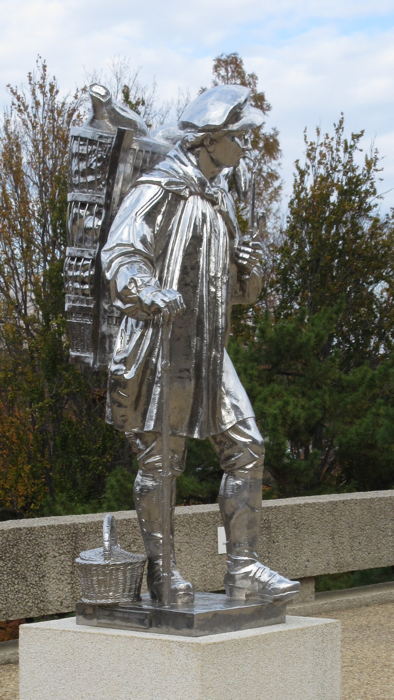
|